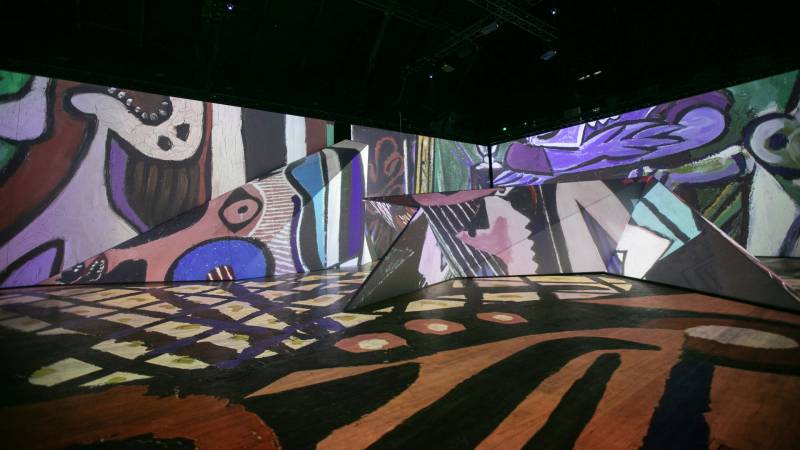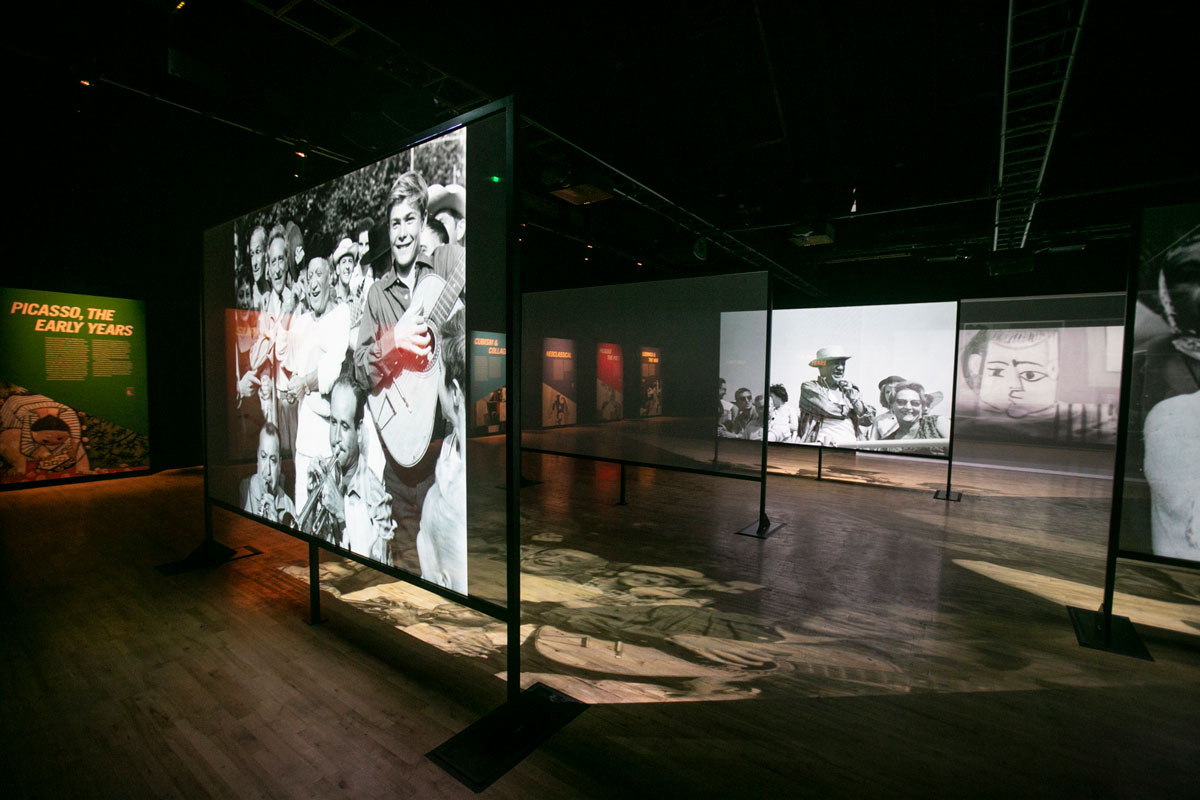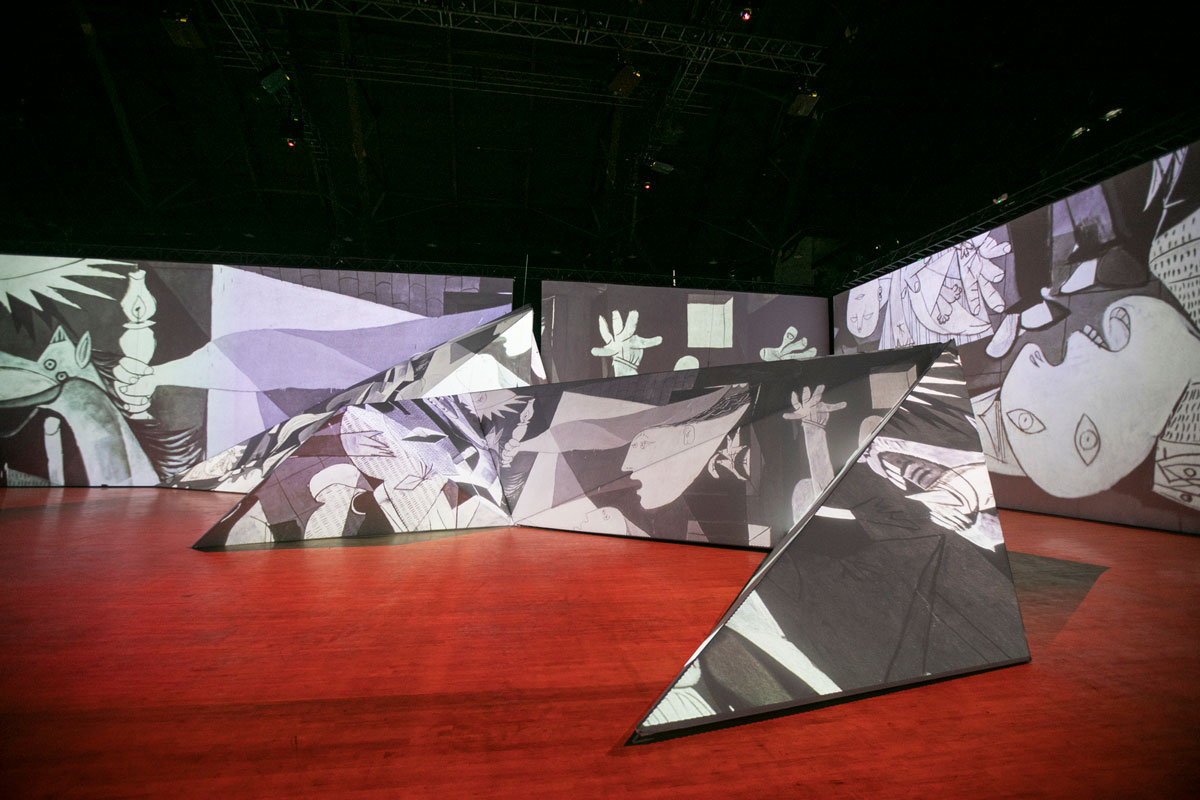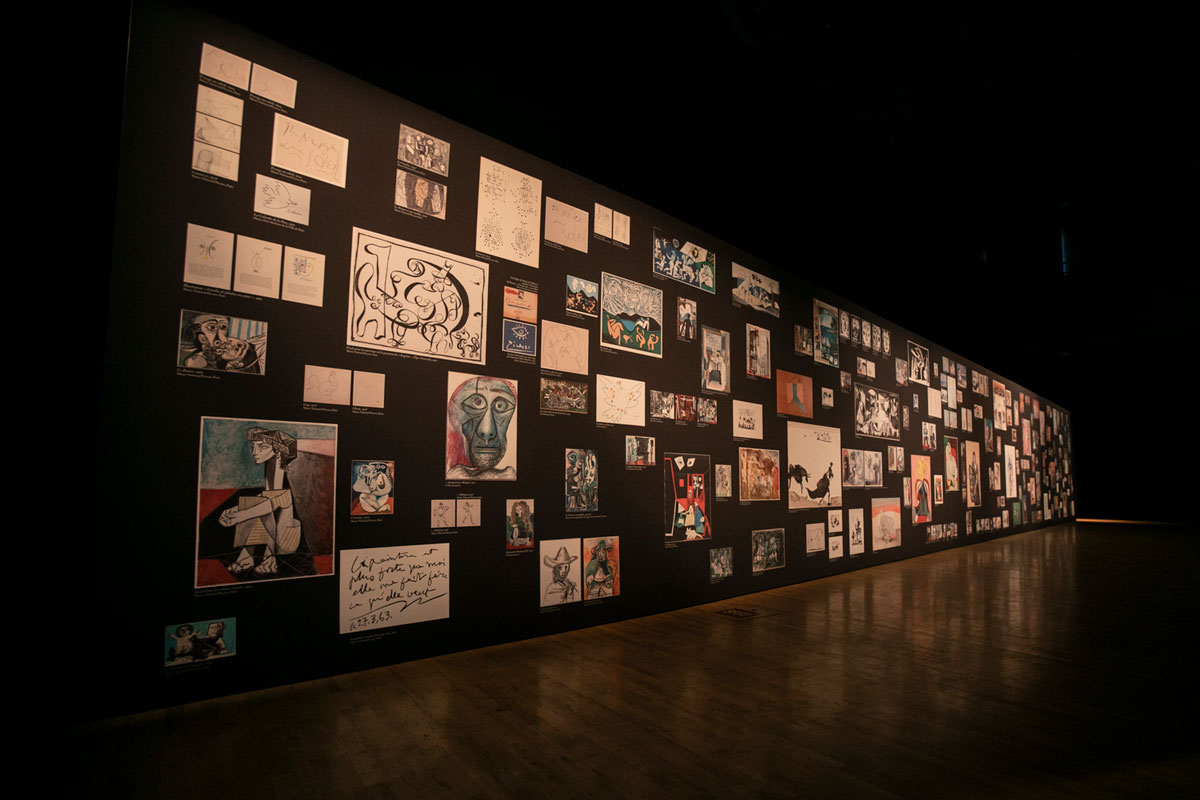It turns out not all immersive exhibitions are created equal.
I can’t believe I’m writing this, but I didn’t hate Imagine Picasso, San Francisco’s newest projected light display of paintings by a dead European man.

It turns out not all immersive exhibitions are created equal.
I can’t believe I’m writing this, but I didn’t hate Imagine Picasso, San Francisco’s newest projected light display of paintings by a dead European man.
You may have heard of Immersive van Gogh, an “experience” at SVN West that courted us with cheesy “Gogh” puns and up-sold audiences on posters and cushions. In that presentation, van Gogh’s paintings came to life in bizarre and illogical ways. Édith Piaf sang the very French anthem Non, je ne regrette rien while we looked at morphing images of the Dutch painter’s work. The whole thing was a vortex of animated brush strokes and painterly special effects that told you nothing about how the images were created, why van Gogh’s particular compositions carry such emotional weight or what the trajectory of his short, prolific career looked like.
Imagine Picasso proves there’s an alternative to the funhouse model of immersive displays. Created by Annabelle Mauger and Julien Baron, the show is making its U.S. debut in San Francisco after stints in Lyon, Quebec and Vancouver. Imagine Picasso occupies three “rooms” inside San Francisco’s Armory building (the former Kink.com headquarters) below the 80-foot ceilings of the former drill court.
The first room, a holding area before the official start of the show, is all sepia-toned photographs and red velvety couches—a version of Paris meant to introduce us to the kind of ambiance Pablo Picasso (“the most French Spanish artist,” according to one of the presenters) might have enjoyed in the first half of the 20th century.
To the right, a full gift shop, because of course.

After the lounge, the presentation begins, surprisingly, with biography (previous “experiences” have set my bar so incredibly low). This room is lined on both sides with large text panels detailing Picasso’s life and the bodies of work he produced, with some glancing mentions of a “family crisis” and a “secret affair” that hint at his womanizing. Between the two walls of text: delicate scrims upon which black-and-white still and moving images of the artist are projected.
The effect here is quite lovely, if a bit chaotic. Light spilling through the transparent fabric falls at an angle against the floor. Images and sounds overlap. Dramatic quotes—Picasso is very quotable—about the importance of art and life and blood periodically flash in white text.
Whether one chooses to read the (many) words on those panels is up to you. At least the creators of Imagine Picasso give us the option of learning more. Immersive exhibition naysayers are often seen as snobs, privileging the individual artwork over the democratic and widely dispersed experience of many. But the flip side is no better: too many of these shows treat viewers as if they have no curiosity about the images they’re enjoying.
Which brings us to the main event. I was honestly unprepared for this. Did you know the Armory is the largest column-free enclosed space in San Francisco? The expanse is destabilizing. Compounding that, Imagine Picasso’s projections spread across at least 20-foot-high walls, the wooden floor and numerous angular 3D shapes. The scene turns paintings into futuristic shards amid a precisely rendered digital wonderland.

In her introductory remarks, Mauger said that while she would never animate a painting (no small amount of shade for Immersive van Gogh here), “there is no gravity” in Imagine Picasso. In addition to wild distortions in scale, a painting might be tilted askew, one aspect of it isolated from its surroundings and repeated across a variety of surfaces, becoming more of a motif than an aspect of a larger whole.
The show cycles through a series of short chapters, each no more than a few minutes in length. Nothing moves or “comes to life” in an outrageous way. The most dynamic effect is a kind of Ken Burns zoom and pan. The music is understated, sometimes even somber. (Though I remain adamant it is extremely awkward to turn Guernica into a fragmented immersive display—leave this anti-fascist painting alone.)
Barring that, it’s … cool. Like truly, pretty cool. It even kind of makes sense for Picasso (because really, any graphic, colorful, interesting images would do well under this type of treatment). One might say it takes Cubism and makes it even more fractured, more futuristic.
The thing that most endeared me to Imagine Picasso appeared on my way out: one long wall showing images of the over 200 paintings sourced for this display. Their titles, their dates and where they’re housed were all included. It felt like a small miracle.

Immersive shows so often seem to scoff at the idea of the original art, the lived experience of a certain time or the joy of seeking out a specific pleasure (see: eating ice cream). Like malls, we allow these presentations to put dull approximations of real things under one convenient roof. In Imagine Picasso, I found at least a small thread back to the objects and the artist fueling its $40–$50 ticket sales.

‘Imagine Picasso’ is on view at the Armory (1800 Mission St., San Francisco) through March 27. Details here.